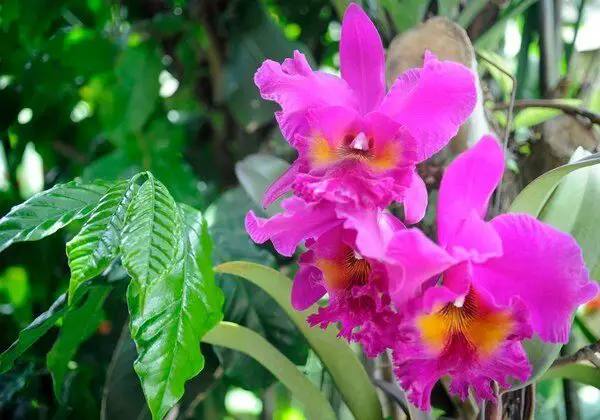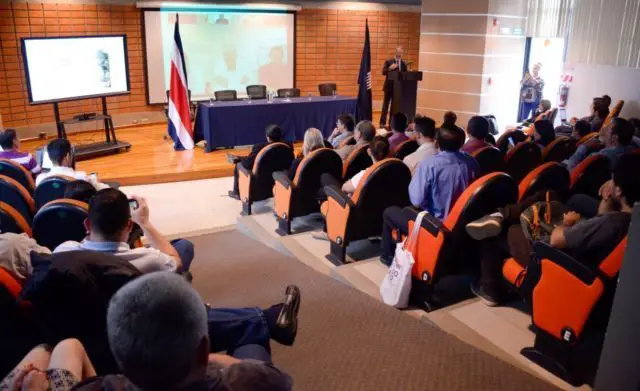The identification of the native flora of Costa Rica now has a new ally thanks to an app that will allow users to identify and know the characteristics of the plants of our country.
The Plants module of Costa Rica is a component of the Pl@ntNet app, which to date did not include the possibility of identifying native plant species from Costa Rica, so thanks to the collaboration of the Tecnológico de Costa Rica (TEC) researchers and the contribution of images of the Organization of Tropical Studies (OTS), Encyclopaedia of Life, engineer Nelson Zamora, and other sources. Pl@ntNet is now able to identify 3,800 native species that grow up in our country.

The research carried out for about 4 years in the field of automatic learning (Machine Learning). In this regard, Automatic Identification of Plants has been led in the TEC by Dr. Erick Mata of the School of Computer Engineering.
This research team has worked for 3 years with researchers from the French Institute of Computer Science (INRIA), and the Center for International Cooperation in Agronomic Research for Development (CIRAD), University of Montpellier, France, who originally developed Pl@ntNet for the French Mediterranean flora. “Thanks to this collaboration, we are pleased to announce the first of several mobile applications that will be available to help identify plants automatically by the general public and specialists”, said Dr. Mata.
In addition to the link with French organizations, the TEC research has made a valuable contribution to the global knowledge about the country’s plants through high impact publications, which are state of the art in this subject. The Plants module of Costa Rica is also a new tool for citizen bio-literacy, ecotourism, and the conservation of our biodiversity.
How does it work?
The user can use the app to directly take a photo of a plant or use one previously stored on his cell phone. The application then compares the visual patterns present in that photo with those of the flowers, fruits, leaves and other parts of thousands of plants with which it was previously trained, through the use of Artificial Intelligence (AI) techniques, known as deep-learning.

The capacity to recognize plant species is constantly enriched with daily contributions from millions of users around the world. The system currently has more than 16,000 species of plants registered thanks to the projects of several regions such as North Africa and Western Europe, among others, to which Costa Rica now joins.
Given the similarity in the botanical biodiversity of Costa Rica and Central America, the system is designed to automatically expand to the native plants described throughout the Central American region. The collaborative aspect does not stop with the contributions of images by users, since they also have the possibility to vote on the quality of the image, suggest a new name for observation, as well as report identification errors, among other collaborative actions that enrich the application day by day.
Costa Rica on the digital biodiversity map
For the researcher of the TEC, it is expected that in the next versions of the module the number of native Costa Rican species will increase considerably thanks to the collaborations of environmental NGOs and institutions as well as the contribution of naturalistic citizens and eco-tourists who visit us. Currently, Pl@ntNet has more than 1 million registered users, is free and has more than 12 million downloads.
Costa Rica has been a world leader in the use of computer tools to better understand biodiversity and disseminate that knowledge. He has actively participated in global initiatives such as the Global Biodiversity Information Facility (GBIF) and Encyclopaedia of Life. But now, with the use of advanced artificial intelligence techniques, he is taking the next step: helping to bio-literate the general public; that is, empowering citizens to know better values and help save biodiversity.
Next steps
In addition to promoting the enrichment of the database of species from Costa Rica and Central America to identify more species of plants in the region, the team of researchers from the TEC and University of Montpellier has already developed the knowing how to make automatic plant identifications for more specialized audiences. For example, they have already shown that you can make identifications with dried plants protected in herbaria and, thus, support the work of scientists from other herbaria and museums.
Similarly, they are using these same techniques to identify trees from wood samples, which is essential for environmental ministries, conservation NGOs, and citizens themselves to monitor compliance with the law regarding the commercialization of threatened timber species.
Official presentation
As part of the official presentation of the Plants module of Costa Rica, there was a meeting between the managers of the initiative both internationally and Costa Rica. Representatives of CIRAD in France were, through video conference, with which the perspectives of one of them, Pierre Bonnet, who highlighted the possibilities of Costa Rica through the TEC, have this contribution to citizen bio-literacy.

The Deputy Minister of Science, Technology, and Telecommunications, Paola Vega, was also one of those present at the event, who pointed out the possibilities that represent for the country to have a contribution more to the context of the current 4th industrial revolution. “Scientific research should demonstrate more and more to society that helps development and can help solve their problems, today this is a clear example”, said the Deputy Minister.

